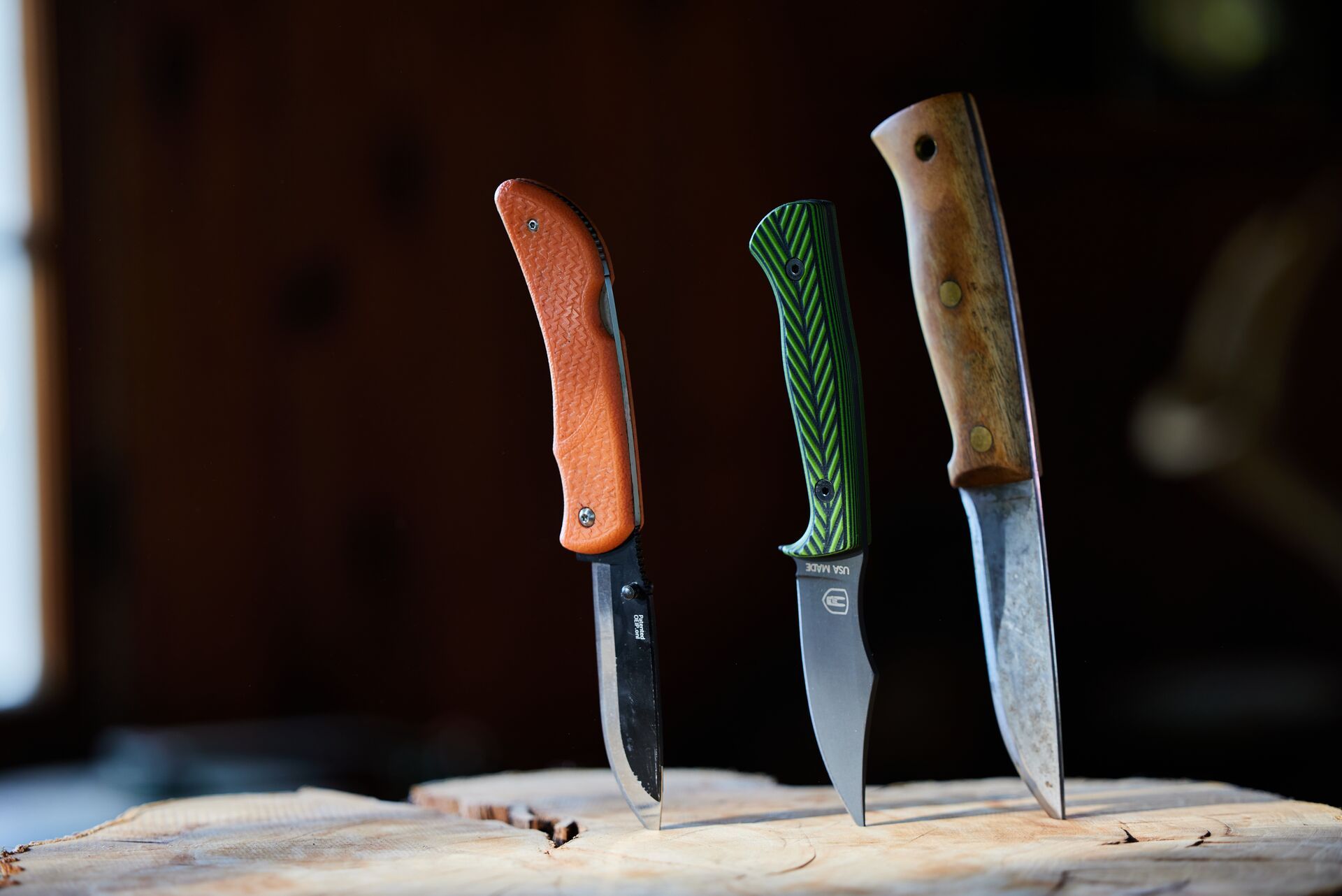Field Guide / Gear
Hunting Knives: How to Choose the Right One

11 Minute Read
I have a late uncle who was disciplined enough to obtain his Eagle Scout rank in the Boy Scouts of America. If you hunt, you've likely been involved in scouting or know someone who has – so you might understand what a monumental accomplishment that is.
It involves learning several skills over several years. These skills include emergency preparedness and first aid, as well as archery and woodworking. Several of the merit badges required take 90 days to complete, which is no small task for a teenage boy. Then, the whole journey culminates in an "Eagle Scout Project," through which the young man must perform an act of service to a deserving person or group in their local community.
Many of these young men join the Boy Scouts as preteens, and those who are dedicated enough will obtain their Eagle Scout badge sometime before their eighteenth birthday. Their journey begins with a few principles that are core to the Boy Scouts – the most famous of which is the Boy Scout motto: "Be prepared."
That journey is relatable to that of a hunter. We also enter the hunting lifestyle with basic principles core to being a good outdoors person, many of which are skills we pick up either as kids from our parents or as adults through trial and error.
A large part of that preparedness for a hunter is gear. More specifically, a good hunting knife. At a glance, a hunting knife might be thought of as simply the tool you will use to field dress and process the animal you harvest. Although that is the primary use, a good knife's capabilities go far beyond that.
Because of the versatile and critical nature of a hunting knife, it's important to know what to look for when selecting the tool that will help you to "be prepared."
Today, we talk about the importance of having the right knife with you in the field and what to consider when choosing the best hunting knives for a successful hunt.
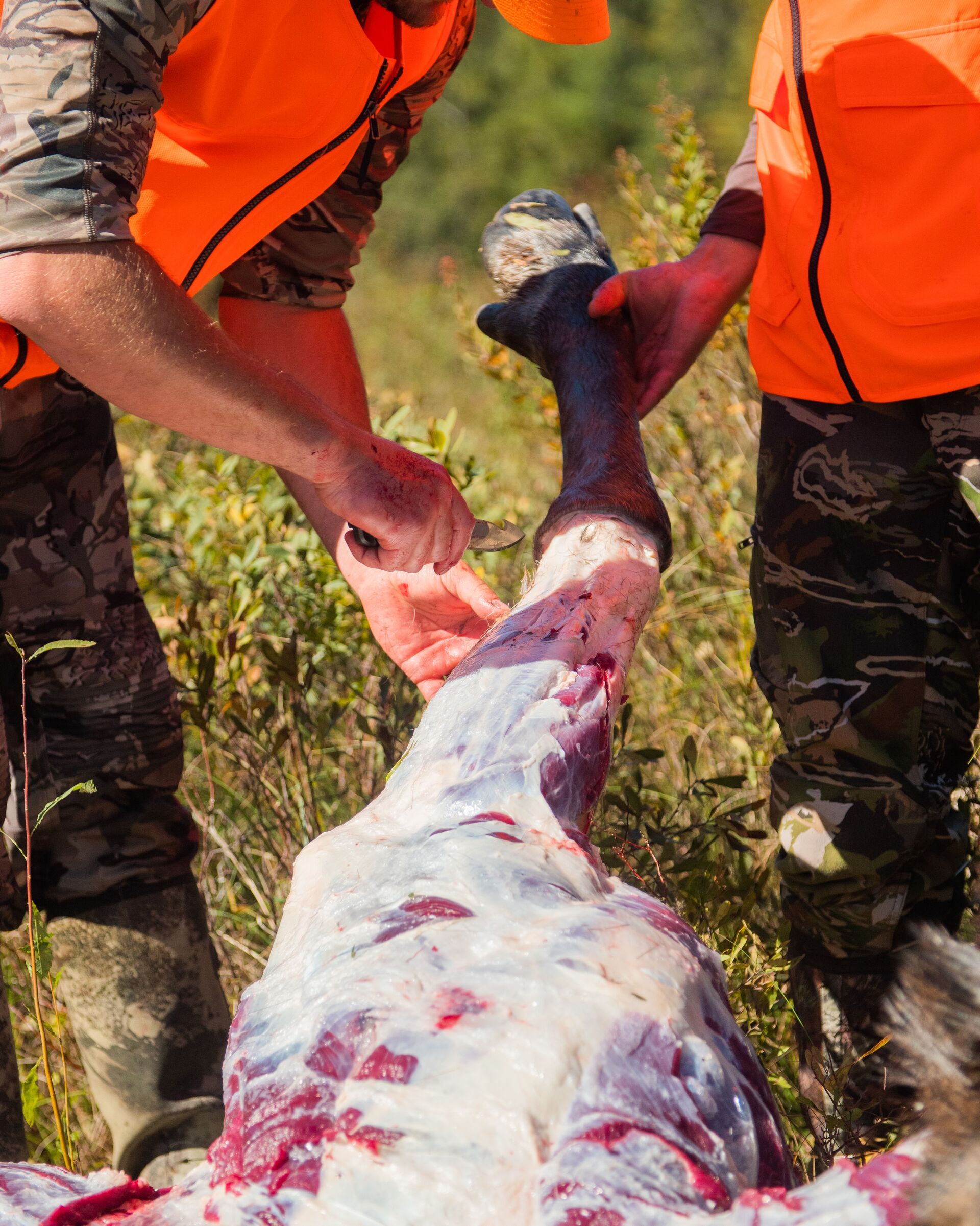
What's It For?
The first thing to consider when selecting a hunting knife is what you will be using the knife for.
As I've said, you will obviously be using this knife to process an animal if you are successful in your hunt. Because of this critical task, it's essential to have a knife that is both very sharp and easy to be precise with.
When you're beginning to break down an animal, it's important to make efficient cuts in the exact places you want them to be made. This could be the difference between keeping clean, delicious meat or contaminating your harvest with stomach matter or other unwanted waste products.
In addition, the knife you carry into the field could be used for other general purposes. These could be things like cutting paracord to hoist processed quarters into a tree, preparing your lunch back at camp, or even helping to build a shelter in a pinch. Any of these various tasks requires a sharp and durable knife.
A knife you can comfortably control and hold an edge through all these tasks is key.
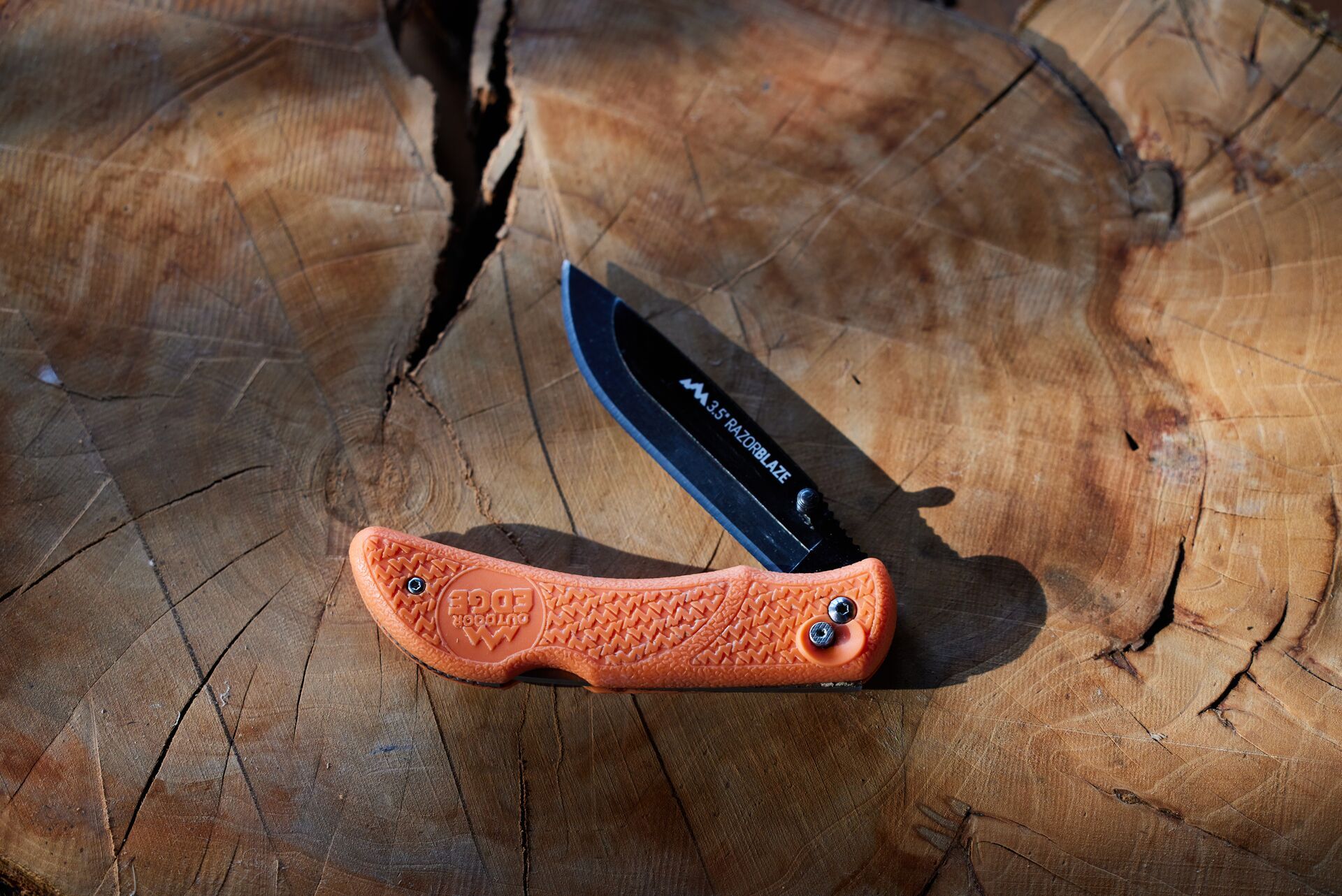
Not All Knives Are Created Equally
A knife is a knife is a knife, right?
Not quite. Not all knives are created equally. For that matter, they really aren't created with much more similarity than the fact that they're designed to cut.
You can decide what type of knife to carry into the woods by deciding between a fixed blade or a folding knife.
Fixed Blade vs. Folding
A fixed-blade knife gets its name from its rigid fixed blade, which is always readily available to cut. Because of this, you will also need some sort of sheath to protect both the blade and yourself.
Conversely, a folding knife typically hinges along the knife's center line so that the blade may fold back into the handle. This protects the blade from outside elements and protects the user from accidental knife-induced injuries.
Fixed-blade knives are considerably more durable than folding knives for obvious reasons. There are fewer moving parts, which means fewer things that can break or malfunction.
However, if convenience is the most important factor to you, a folding knife might be what you're looking for. Personally, I favor durability over convenience when carrying a blade in the woods, but everyone has different preferences and needs.
What's the Blade's Shape?
Blades also come in many different shapes, and understanding them will help you select the knife best tailored to what you will be using it for. In hunting, three designs are particularly popular: drop point, clip point, and gut hook.
Drop Point
A drop-point knife is discernible by its convex shape, rounded, slightly sloping spine, and low-profile point. Due to their durability, drop-point knives are a favorite among hunters.
The rounded shape of the drop point blade makes skinning easy, and their durability means they're ready to withstand the abuse of many deer seasons to come. In fact, one of our partners, Montana Knife Company's most popular knives, is a drop point: The Super Cub.
Clip Point
A clip-point knife is very similar in shape and intended use as a drop point. However, the clip point gets its name from its tip, which appears to be "clipped."
This design gives the knife a sharp point that would aid in stabbing more effectively than the drop point. Be cautious, though: this thinner point also makes the clip point more susceptible to breaking.
Gut Hook
Finally, the gut hook knife is specifically designed for the process of removing the entrails from the critter you've just harvested.
The shape of gut hook blades varies, but the small hook that curves back toward the handle from the upper side of the tip will always be there. This hook is designed to be inserted just into the animal's hide on their stomach and cut so that the guts may be removed.
Some people find the gut hook helpful because it guarantees they will not insert their knife too deep into the animal's stomach and potentially puncture the guts.
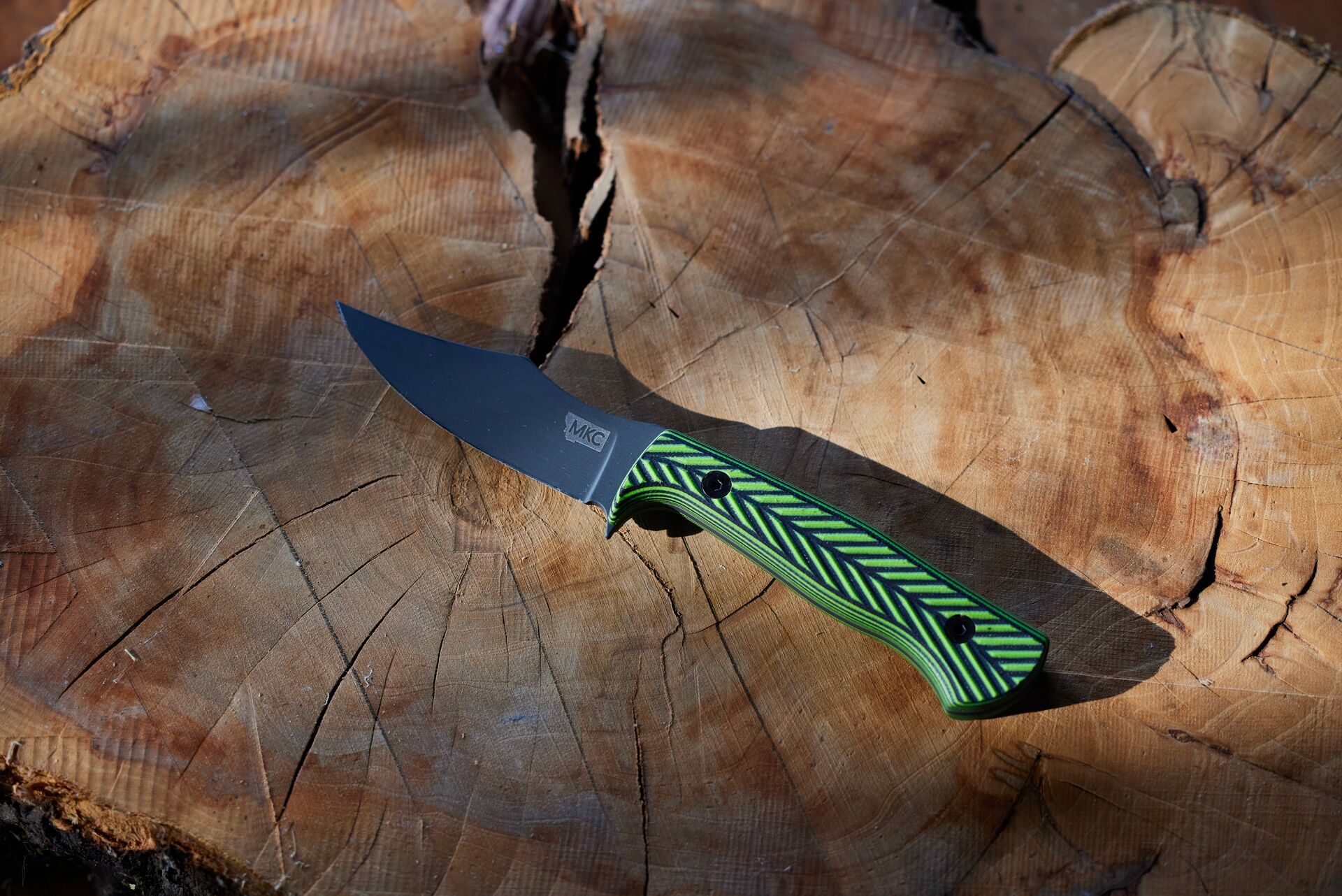
What's It Made Of?
Now that we've covered the blade shape, it only makes sense to discuss what a good hunting knife is made out of.
First, it's important to consider the material used to create the blade of your knife. Popular hunting knives will vary significantly in the material used for this, but in general, you can expect to find stainless steel, carbon steel, or Damascus steel.
Stainless Steel
Stainless steel knives are a popular option among outdoor enthusiasts because of their corrosion-resistant nature. They are also easy to maintain and tend to be pretty resistant to rust.
Carbon Steel
Carbon steel knives are less corrosion resistant but maintain an edge better because the carbon content makes the steel a harder material than stainless steel. These knives would be a great option if you plan to do a lot of cutting without the ability to sharpen your knife, like on a backcountry trip where weight in your pack is a serious consideration.
Damascus Steel
Damascus steel knives are best known for their unique layering and beauty. They are made of an alloy that blends and layers stainless and carbon steel to form a strong, durable, corrosion-resistant blade that is soft enough to resharpen easily.
Damascus knives are a great option, but be warned: They are often the priciest option.
How Long is the Blade?
Of course, blade length also plays a key factor in choosing your hunting knife. However, this is another broad-spectrum item characteristic of hunting knives.
For example, if you're hunting moose, you probably would prefer a knife with a little bit of added length to effectively cut through their hide. But, if you're hunting in the Midwest for whitetail and turkeys, you can probably get away with a smaller, more compact knife.
Ultimately, when it comes to blade length, I like to live by the principle that less is more. Both for convenience and weight in the field, the smaller the knife you can effectively use, the better off you are.
That Montana Knife Company Super Cub knife I mentioned earlier has a blade length of just under six inches. They share that it can "take on any job you encounter in the field – from field dressing, gutting, and deboning to fieldcraft tasks like chopping and batoning wood."
In other words, that blade length is perfect for the do-it-all hunting knife.
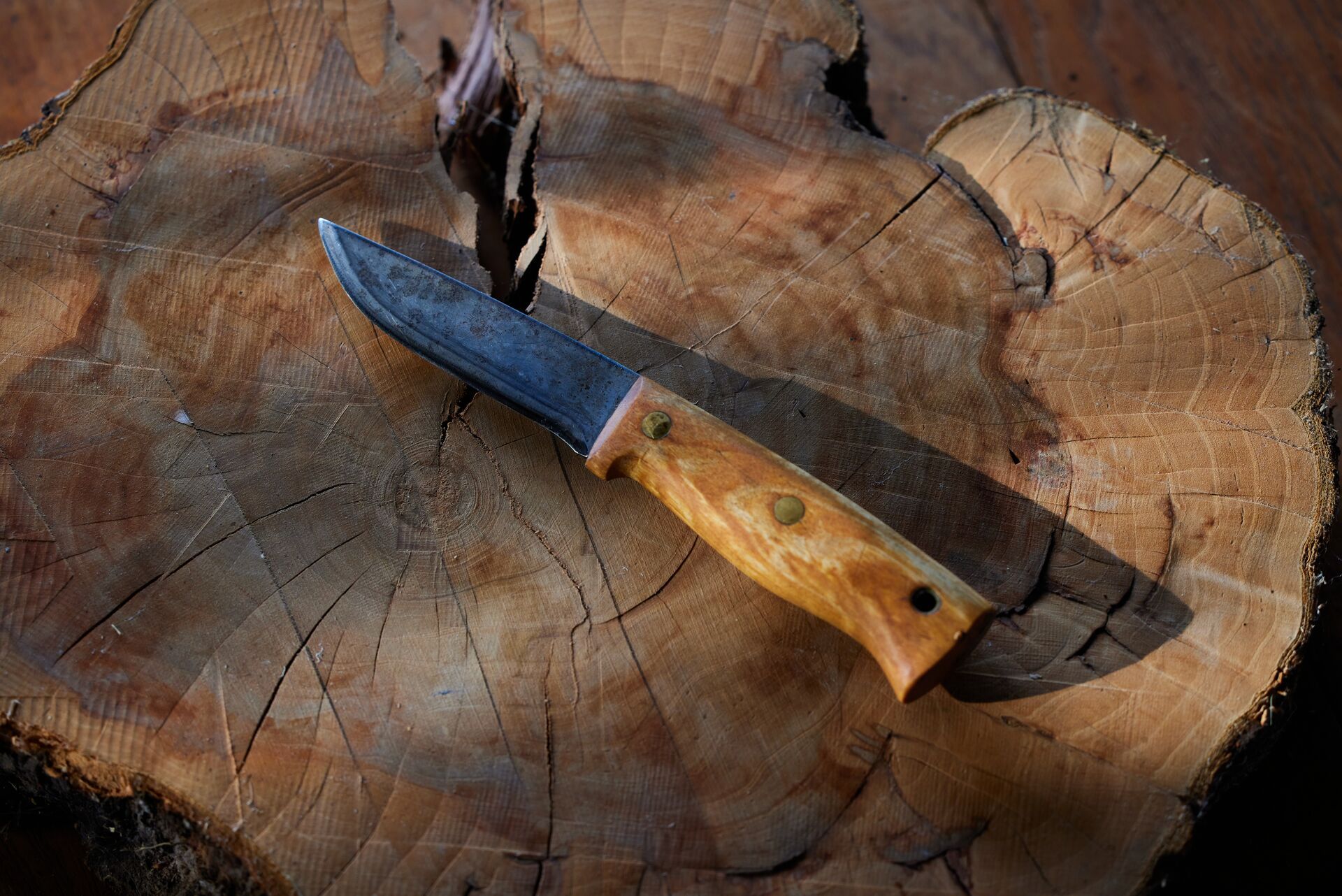
How Does It Handle?
The handle's comfort and material will allow the user to make safer, more precise, and efficient cuts. Remember, the better the knife feels in your hand, the better you will use it.
Many factors play into the comfort of a knife, including weight and shape, but it all begins with the handle. For this reason, I like a larger handled knife myself.
I find it important to be able to have a full and firm grip on the knife's handle. Perhaps that goes back to my years wielding 10" chef's knives in kitchens, but regardless, I think a larger handle makes it easier to use the knife.
Regarding the handle's material, I think this is entirely a personal preference. Understand that materials like wood and bone require an extra level of care beyond that of synthetic materials. They also tend to get more slippery when coated with a layer of fresh blood.
However, they look really cool. I have an awesome hunting knife made by Lucas O'Hara of Grizzly Forge that has a wooden handle. It's hands down my favorite knife that I own. However, I wouldn't have wanted the wooden handle five years ago before I really took the time to learn how to care for it in the field.
The handle material boils down to what is most important to you. Is it comfort and durability? Then, you may want to consider a synthetic option.
But if you're looking for a statement hunting knife that offers a lot of comfort and is something your buddies will appreciate and ask you about, going for a wooden or bone handle is probably the move.
What About Tang?
Not the powdered orange drink astronauts love, but an additional consideration to make is whether or not the knife is a full tang blade.
A full tang knife is characterized by the blade running the entire length of the handle all the way to the tip so that the steel carries throughout the knife. This greatly helps with the balance and comfort of the knife in your hand.
Beyond that, a full-tang knife will almost always be more durable than a knife with only a half-tang or a folding blade.
Guards and Pommels
Guards and pommels are also popular additions to many hunting knives and are additional aspects to consider when choosing a knife.
- The guard is built into the knife's handle, where it meets the bottom edge of the blade. Guards are designed to keep the user's hand from slipping forward during cutting, making the knife both safer and easier to maneuver in many instances.
- Pommels offer a similar use, but rather than at the top of the handle, they're situated at the bottom and prevent the user's hand from slipping backward. Often, pommels are found on more decorative knives or larger blades like bowie knives or swords.
A pommel would be useful if you were to use the knife for things like chopping small pieces of wood or other tasks that would require a more aggressive swinging motion.
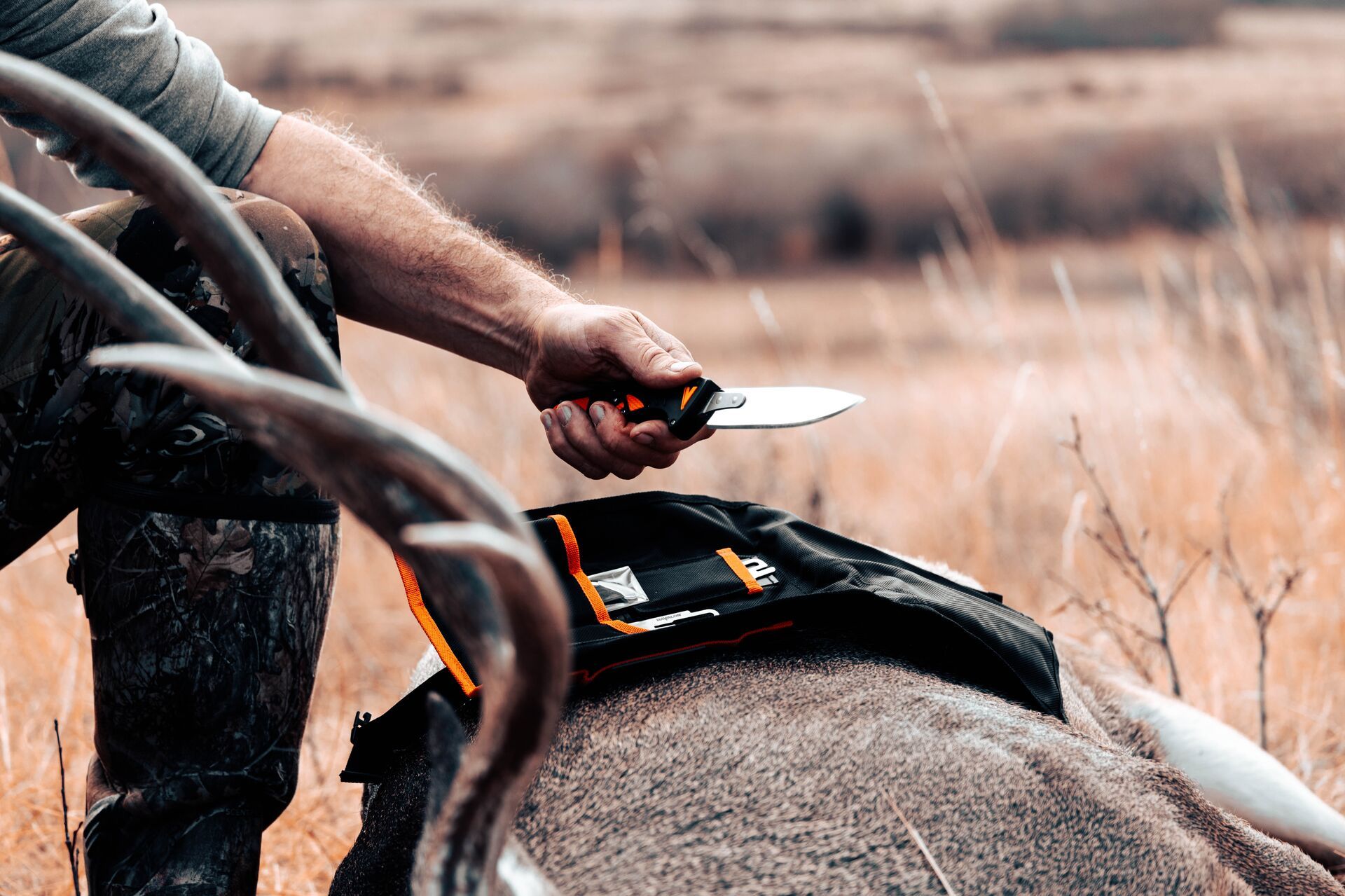
How to Care for Hunting Knives
Finally, now that you know everything you need to select the best hunting knife, it's important to know how to care for your knife. This is as simple as keeping your knife both sharp and rust-free.
To keep my knife sharp, I like to take the time before every hunting season and use a benchtop sharpening stone to finely hone the edge of my blade. I begin on the course side of a triangle-shaped stone to remove the bulk of the dull edges, making strokes that cover the entire length of the blade at an angle that will give my knife the edge I desire.
I then switch to the medium side before finishing with the fine side of the stone. I repeat that same process for each side of the knife, counting how many strokes I'm making to ensure that each side is sharpened evenly.
If you're unsure exactly how to use a sharpening stone, there are excellent electric or hand-held options that only require you to guide your knife through a slot that peels the steel off to regain an edge. I carry a small hand-held sharpener in my hunting backpack to be sure that I can put an edge back on my knife in the middle of butchering an animal if I need to.
Cleaning and Storage
Each time I use my knife, I wash and store it properly so it never rusts.
To do this, I simply clean my knife with soapy water to remove any bacteria the blade or handle might have picked up in the field. Then, I apply a small amount of oil to the blade. This prevents water from getting to the steel and causing rust.
If you do get a small amount of surface rust on your knife, scrub it gently with steel wool to remove that surface rust, then add a thin coat of oil.
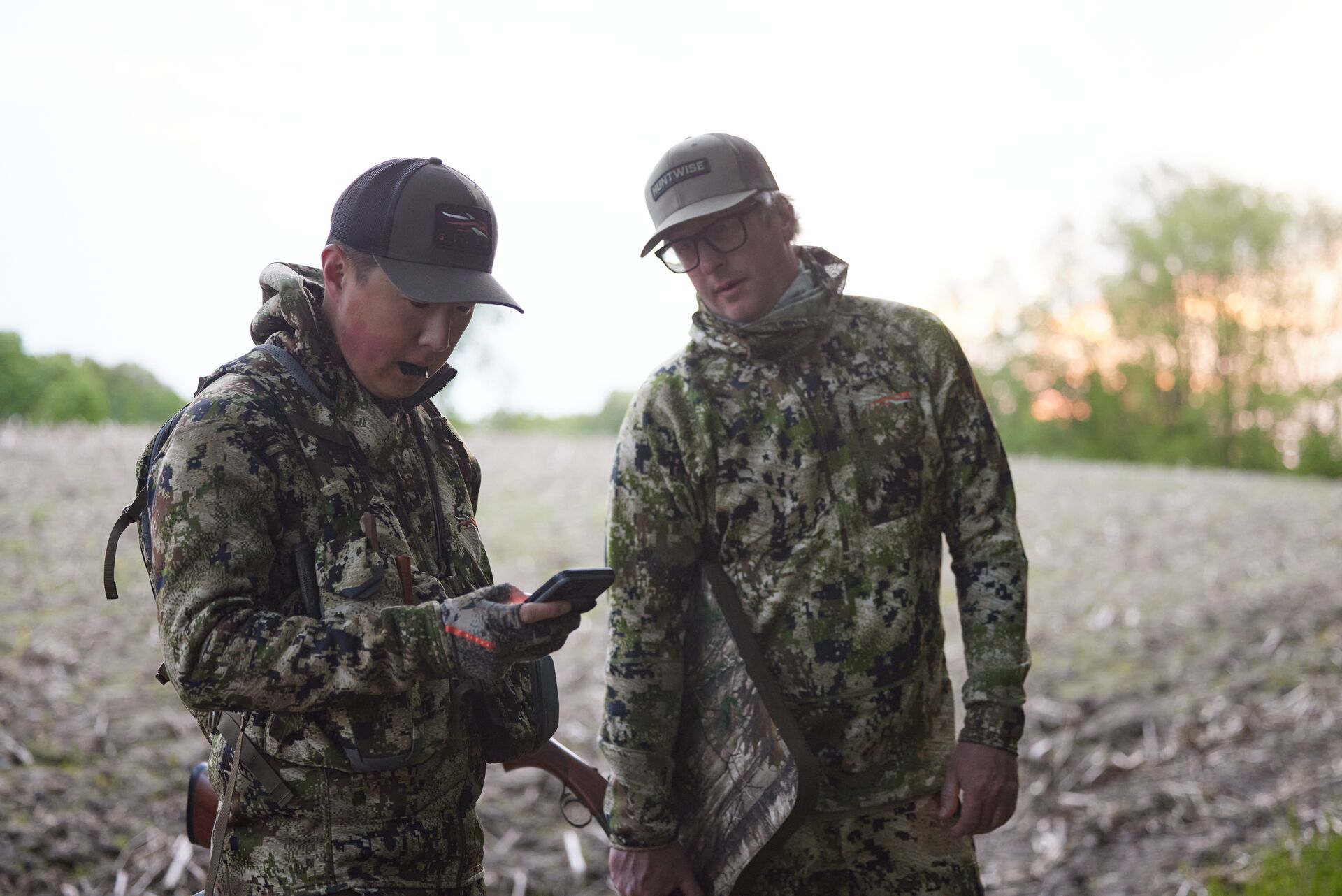
Grab Your Hunting Knife and HuntWise for a Successful Hunt
My hunting knife is nearly as important to me as my compound bow is. It seems like every year, I take a little bit more pride in how my knife is sharpened and maintained.
Having to struggle through gutting your own animal with a dull or poorly designed knife is one thing. But, over the last few years, I've begun taking new hunters out, and it helps to teach them if you're not fighting your way through field dressing with a bad or dull knife.
Ultimately, the tools we use for hunting are trivial compared to the preparation we put in. Sure, a good knife is incredibly important, but if we don't prepare properly, that knife will never meet the hide of an animal you've bagged.
Prior to this hunting season, download HuntWise and scout hard. Develop a strategy through e-scouting at home, get in the field, check your plan in person, then drop pins to solidify where you will meet that critter this fall.
If you're new to HuntWise, now's the time to download the app and explore every feature – free – for a week to get ready for a successful season.
Remember: Our gear partners offer fantastic discounts to HuntWise subscribers. When shopping for your hunting knife, you can save money when shopping with our partners (like Montana Knife Company) and applying your subscriber discount. Save more with a HuntWise Pro or Elite Subscription! |
More Content Like This
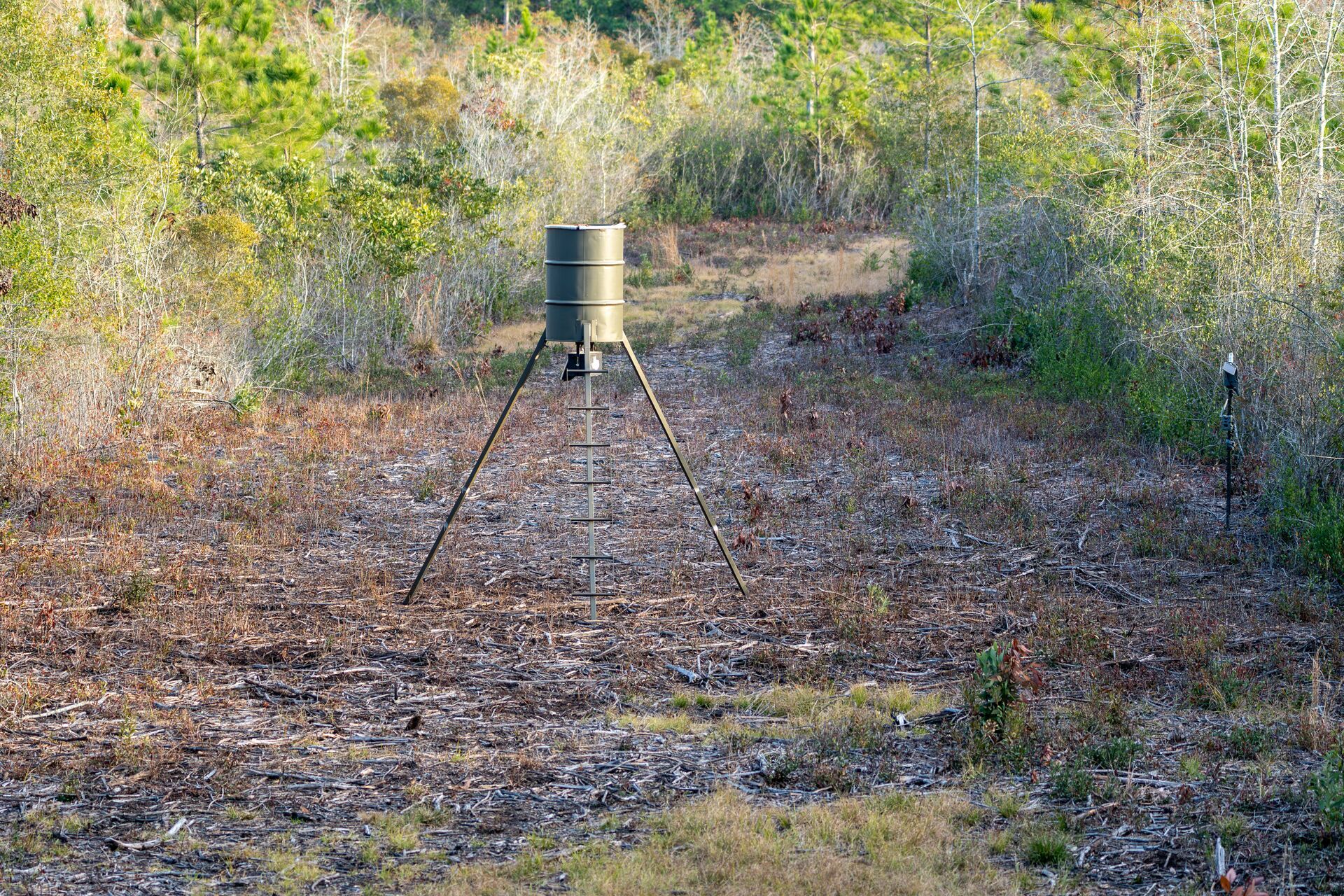
Best Deer Feeders for 2025
Deer have to eat. However, we all know that deer are cautious, highly skittish, and spooked by sudden movement, sounds, and smells – and sometimes, we don't even know what!Read More
Read More
Best Trail Cams For Hunting in 2025
If you want to level up your year-round scouting, gain valuable insights into animal movement patterns through your local hunting areas or are just curious about what's around, a trail cam is a must-have for a successful hunting season. Read More
Read More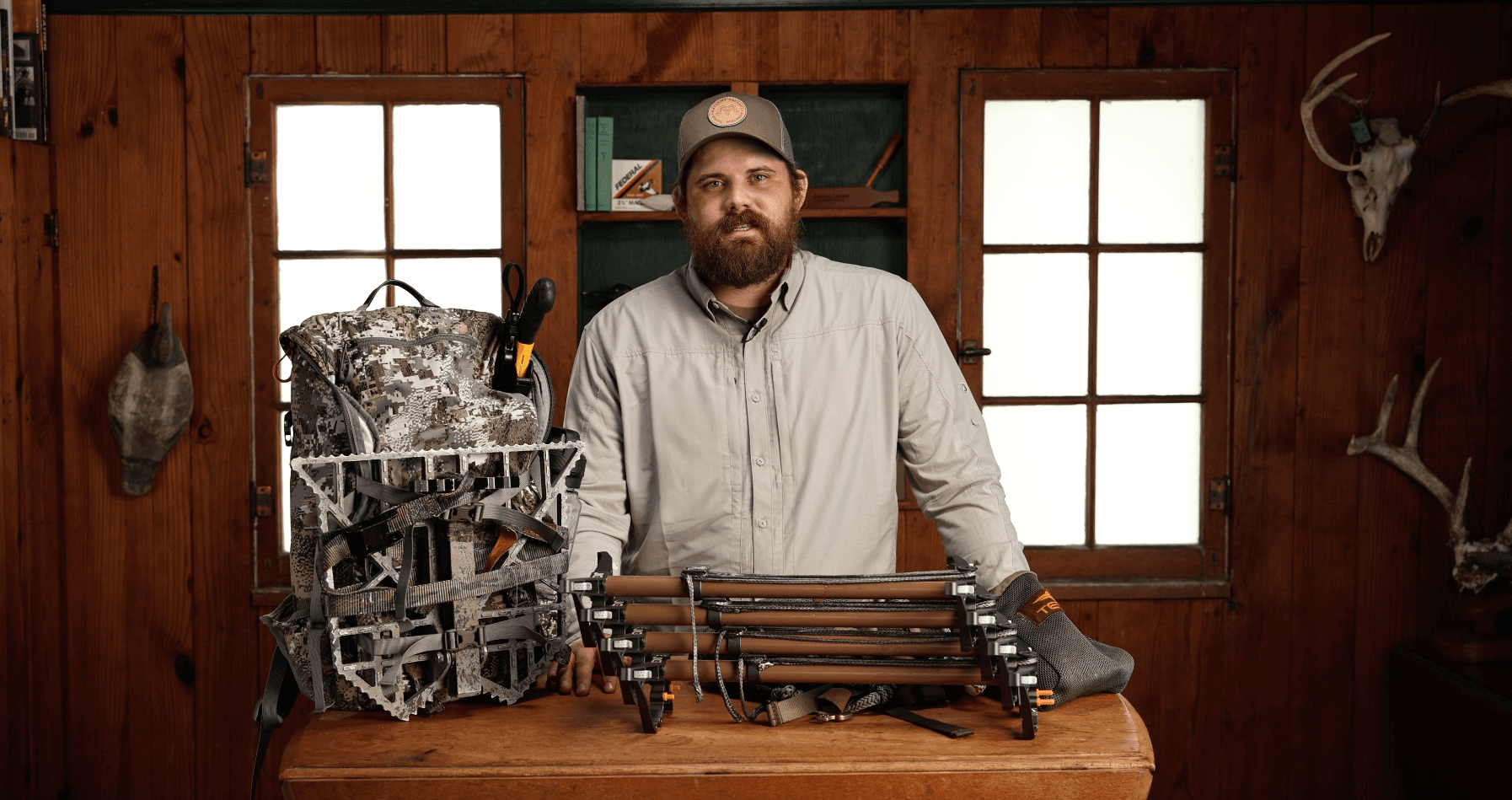
Must-Have Cold Weather Hunting Gear: Mid-Season Recos from the Pros
You're gearing up for a mid-season hunt. What is the must-have mid-season hunting gear you should have for colder weather?Read More
Read More Gear
GearBest Deer Feeders for 2025
By Cody Barhorst, Teri Williams | 06/17/2024Deer have to eat. However, we all know that deer are cautious, highly skittish, and spooked by sudden movement, sounds, and smells – and sometimes, we don't even know what!Read More
Read More Gear
GearBest Trail Cams For Hunting in 2025
By Teri Williams, Travis Hawkins | 05/03/2024If you want to level up your year-round scouting, gain valuable insights into animal movement patterns through your local hunting areas or are just curious about what's around, a trail cam is a must-have for a successful hunting season. Read More
Read More Gear
GearMust-Have Cold Weather Hunting Gear: Mid-Season Recos from the Pros
By Teri Williams | 10/07/2024You're gearing up for a mid-season hunt. What is the must-have mid-season hunting gear you should have for colder weather?Read More
Read More
1 of 3
